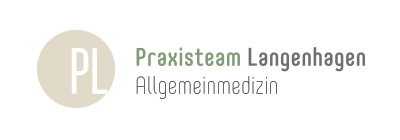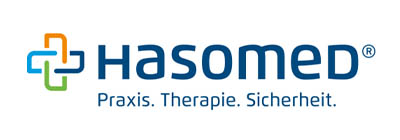Rural healthcare provision with secure healthcare networks
Cross-sector care processes are a key factor in providing comprehensive healthcare to the population. Unfortunately, due to a shortage of doctors and the closure of surgeries and pharmacies, the density of care is becoming ever lower, particularly in rural areas.
Only regional healthcare centers and networks, in which doctors, pharmacies, nursing services, laboratories, and medical supply stores work together to treat patients, can counteract this development. In order to provide high-quality healthcare, it is essential to create a secure database on patients and uniformly used, trustworthy communication channels.
The LANCOM Connected Health Ecosystem concept offers the healthcare market a digital ecosystem in which healthcare providers can equip themselves with the latest, secure network technology and join together in protected care clusters. Read here how the LANCOM digital healthcare networks work and what benefits they bring to the healthcare market.
Quick overview of the LANCOM Healthcare solutions:
LANCOM Connected Health Ecosystem Flyer

Invest now in Digital Sovereignty and NIS2 preparations
The healthcare sector has been part of the critical infrastructure sectors affected by the NIS1 directive since 2016 and is subject to certain European cybersecurity requirements. With NIS2, further, stricter requirements will now be added from October 2024, which will be laid down in national laws. Compliance will be checked and sanctioned. It's best to prepare now and find out what you need to consider in the future – also in the interests of your Digital Sovereignty:
Find out now about NIS2 and the topic of “Digital Sovereignty”!
Digitalized care paths for patients
Larger group practices and healthcare centers shoulder the main burden of basic medical care beyond the metropolitan areas. They in particular benefit from networking with facilities in related disciplines and professions. A key strategy for mitigating the consequences of demographic change – increasing demand and overstaffing – is to develop joint care concepts.
If specialists, clinics or treatment centers, care facilities, physiotherapists, pharmacies, and medical supply stores all have shared knowledge, appointments and specialists for diagnostics, therapy, and care measures can be booked in good time and medication as well as aids can be ordered.
For the service providers involved, this greater transparency means greater efficiency thanks to smooth processes along the entire care pathway. For this purpose, the cooperating healthcare providers are networked in a digital ecosystem to ensure a high quality of treatment for patients.
Secure healthcare networks: good for everyone
Cooperation along the medical and nursing care pathway brings concrete benefits for institutions and patients. Here are some examples:
LANCOM Connected Health Ecosystem
The basis for digital ecosystems and symbioses in the healthcare market
The basis for the legally compliant and efficient exchange of information within the healthcare market is a closed digital network in which the healthcare facilities involved can securely generate and exchange highly sensitive patient care information.
The LANCOM Connected Health Ecosystem offers the best conditions for this: It equips the respective facilities with LANCOM Health IT Infrastructures and is then expanded into an overarching care cluster via a LANCOM Health IT Cluster Solution with the help of a cloud-managed, digital healthcare network.
With the symbiosis of health IT infrastructure and cluster solution, multiple data connections can be established between practices, clinics, laboratories, and therapists. In addition, larger facilities in particular can provide healthcare professionals in the home office with decentralized access via the LANCOM Trusted Access Client for telemedical care of patients.
The LANCOM Health IT Cluster Solutions can be expanded as required. This means you can gradually expand your network and the range of services. The care network is installed and monitored by specialized and trained system houses.

With the LANCOM Health IT Infrastructures, all network components (hardware and software as well as service/support) necessary in the healthcare institutions can be purchased, leased, or rented for three years.
The Health IT Cluster Solutions ultimately network the healthcare institutions in a digital ecosystem for joint cooperation, which is managed by managed services providers. In this way, overarching collaborative and referral networks can also be implemented securely.
The benefits for healthcare institutions:
- Compliance with the legal requirements of government directives like the NIS-2 directive
- Secure use of telemedicine within medical and healthcare networks
- State-of-the-art cybersecurity
- Flexibility: purchase or lease / rent at monthly or quarterly usage fees
- Efficient resource usage thanks to support from industry-experienced technology partners
The convenient all-in-one solution can be scaled to the needs of the healthcare facility at any time.
Successful health networks for inspiration
Patients from various countries are already being accompanied digitally on their treatment pathway.

Great Britain
GP practices can use the e-referral service of the British National Health Service (NHS) to book a specialist or clinic appointment with their patients directly with the shortest waiting time and are advised of the necessary preliminary examinations.

The Netherlands
The service providers in the Buurtzorg home health and care service plan their routes and medical measures via an e-care platform.

Australia
The digitalized care pathway enables the Central Adelaide Local Health Network (PDF) to prioritize cases prior to referral, identify clinical risks and provide personalized patient education.

Spain
Access to all relevant data makes it easier for the interdisciplinary breast cancer team at the Hospital del Mar in Barcelona (PDF) to discuss findings. When treatment is time-critical, the rapid exchange and informed discussion of options based on complete data is vital.

USA
The cancer treatment program of the US healthcare company Kaiser Permanente is largely digitalized. All treatment steps are carried out according to a personalized care plan that can be accessed digitally by patients and care teams at any time.
















